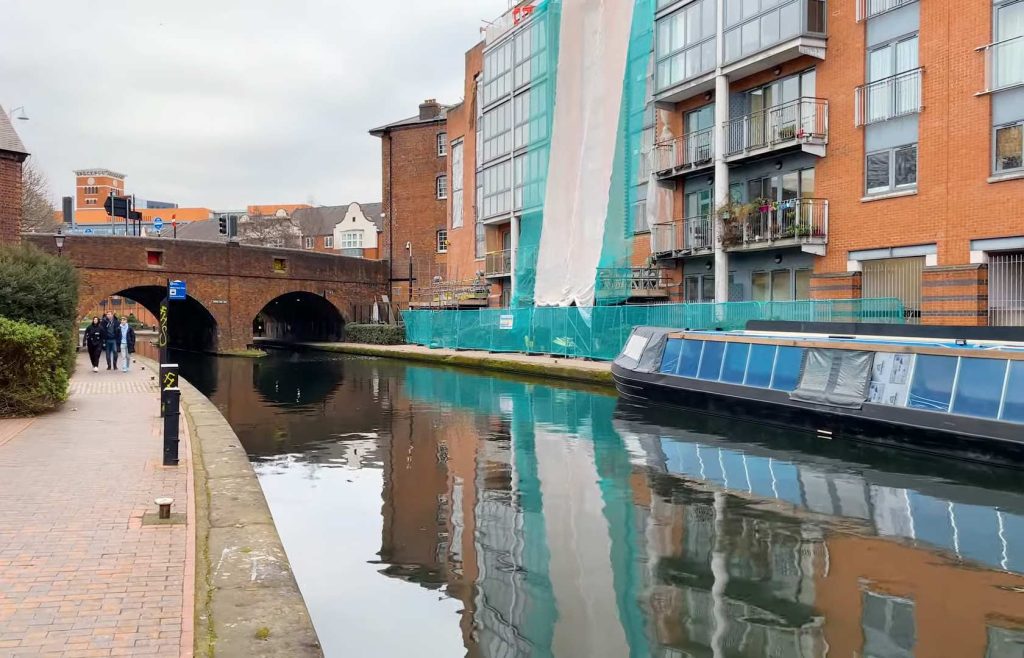Explore the intriguing history of the Worcester Blackstone Canal, a vital waterway that played a significant role in the economic development of the Blackstone Valley.
Despite facing challenges like water rights disputes and seasonal closures, the canal catalyzed growth in Providence and Worcester as bustling trade hubs.
The Blackstone Canal Company’s efforts, though ultimately overshadowed by the rise of railroads, left a lasting impact on the region’s commercial landscape.
Delve into a chapter of history where Boston’s economic interests clashed with Worcester’s ambitions, shaping the narrative of trade and transportation in the early 19th century.
Discover how the Blackstone Canal project, initially hindered by Boston’s maneuvers, eventually gained momentum following the success of the Erie Canal.
Uncover how this hidden gem of Worcester’s past reflects a bygone era of industrial prowess and strategic maneuvering in the evolving American landscape.
The Origins of the Worcester Blackstone Canal

The Worcester Blackstone Canal holds a significant place in the history of transportation and commerce in Massachusetts.
Its origins can be traced back to the early 19th century when the burgeoning industrial revolution created a growing need for efficient transportation routes to move goods and raw materials.
Planning and Construction
The construction of the Worcester Blackstone Canal was a remarkable engineering feat that aimed to connect Worcester and Providence, transforming the transportation and commerce landscape of the region.
The original plans for the canal included an impressive 62 locks, showcasing the scale and ambition of the project.
Residents and businesses saw an opportunity in repurposing the canal, leading to innovative solutions like arching over the original canal bed with stone to mitigate pollution and modernizing the system with treatment plants like the Upper Blackstone treatment plant.
Key Figures and Influences
Numerous key figures and influential entities played pivotal roles in the development and operation of the Worcester Blackstone Canal.
The Blackstone Canal Company, despite facing water rights disputes with factory owners, persevered in maintaining the canal operation.
The court rulings of the early 19th century New England, favoring the rights of mill owners to water, had a significant impact on the management and future of the canal.
The clash between economic interests of Boston and Worcester highlighted the strategic maneuvering and industrial prowess of the era, shaping the history of the Blackstone Canal and its lasting legacy in the region.
Function and Operations of the Canal

The Worcester Blackstone Canal served as a vital transportation artery, facilitating the movement of goods and raw materials between Worcester and Providence, Rhode Island.
Here’s an overview of its function and operations:
Transportation and Trade
The Worcester Blackstone Canal played a vital role in facilitating transportation and trade in the early 19th century. It served as a crucial link between Worcester and Providence, enabling the efficient movement of goods and people.
By connecting these two significant commercial centers, the canal contributed to the growth of trade networks and boosted economic activities in the region.
Its strategic location and operational efficiency made it a key artery for transporting raw materials, finished products, and passengers, enhancing market accessibility and fostering economic development.
Impact on Local Economy
The operations of the Worcester Blackstone Canal had a profound impact on the local economy. By providing a reliable and cost-effective means of transportation, the canal spurred industrial growth and commercial activity in Worcester and Providence.
The ease of shipping goods along the canal corridor facilitated trade, allowing businesses to expand their markets and reach a wider customer base.
Additionally, the canal’s influence extended beyond transportation, as it catalyzed the development of supporting industries such as warehousing, manufacturing, and shipping services.
Overall, the Worcester Blackstone Canal played a pivotal role in driving economic prosperity and shaping the economic landscape of the region.
The Decline and Closure

The decline and closure of the Worcester Blackstone Canal marked the end of an era in transportation history, influenced by various factors that rendered the canal obsolete.
Here’s a look at what led to its demise:
Reasons for Decline
The Worcester Blackstone Canal faced a significant decline primarily due to a combination of financial struggles and technological advancements.
As railways became more prevalent and efficient in the transportation sector, the canal’s relevance diminished.
Additionally, the ongoing disputes over water rights and the costly fines imposed on the Canal Corporation further burdened its operations and financial stability.
The emergence of alternative transportation modes and the canal’s inability to adapt to changing economic landscapes contributed to its gradual decline.
Aftereffects on the Region
The decline and eventual closure of the Worcester Blackstone Canal had profound implications for the region. The loss of this vital transportation link impacted the local economy, leading to job losses and disrupting trade flows between Worcester and Providence.
The closure of the canal also affected the industrial growth of the Blackstone Valley, causing a decline in market accessibility and hindering the development of supporting industries.
The region struggled to maintain its previous level of economic activity and connectivity, highlighting the lasting consequences of the canal’s closure on the commercial history of Worcester and Providence.
The Blackstone Canal Today
Continue its legacy, the Blackstone Canal in Worcester still holds significance in the region’s history and development.
Let’s explore how preservation efforts and its role as a historical site maintain its importance.
Preservation Efforts
Preservation endeavors have ensured that the Blackstone Canal’s impact endures through time. Initiatives to protect and interpret this historical waterway highlight its contribution to the region’s economic and industrial past.
By maintaining the canal’s remnants and promoting its story, these efforts keep alive the memory of its role in shaping the local landscape.
Understanding the significance of Worcester’s Blackstone Canal history is crucial for appreciating the region’s economic development and industrial heritage.
Preservation initiatives help to showcase how this historical waterway influenced the local landscape and economy, ensuring its legacy remains relevant today.
The Canal as a Historical Site
Designated as a historical site, the Blackstone Canal serves as a tangible reminder of the region’s transportation history.
Visitors can explore the path of the canal, learning about its significance in facilitating trade and connectivity between Worcester and Providence.
As a preserved relic of the past, the canal offers a glimpse into the challenges and successes of early 19th-century infrastructure projects, enriching our understanding of the area’s economic evolution.
Frequently Asked Questions
What was the significance of the Worcester Blackstone Canal in the 19th century?
The Worcester Blackstone Canal played a crucial role in boosting trade and economic activities between Worcester and Providence in the early 19th century, contributing to the economic development of the Blackstone Valley.
Why did the Worcester Blackstone Canal face challenges and decline?
The canal faced challenges like water rights disputes, financial struggles, and competition from railways, leading to its decline over time and subsequent hindrance to industrial growth in the region.
How is the Blackstone Canal preserved today?
Efforts are being made to preserve the Blackstone Canal as a historical site, allowing visitors to learn about its role in trade and connectivity, and providing insights into early 19th-century infrastructure projects.
Conclusion
The Worcester Blackstone Canal stands as a testament to the region’s economic past, showcasing its vital role in connecting Worcester and Providence in the early 19th century.
Despite its eventual decline, preservation efforts ensure that its historical significance remains alive for visitors to explore.
By understanding the canal’s impact on trade and industrial growth, you gain valuable insights into the area’s economic evolution and early infrastructure projects.
As a designated historical site, the Blackstone Canal offers a glimpse into the past, enriching your knowledge of the region’s rich history and the importance of preserving such key heritage sites.
Jaclyn Lowe